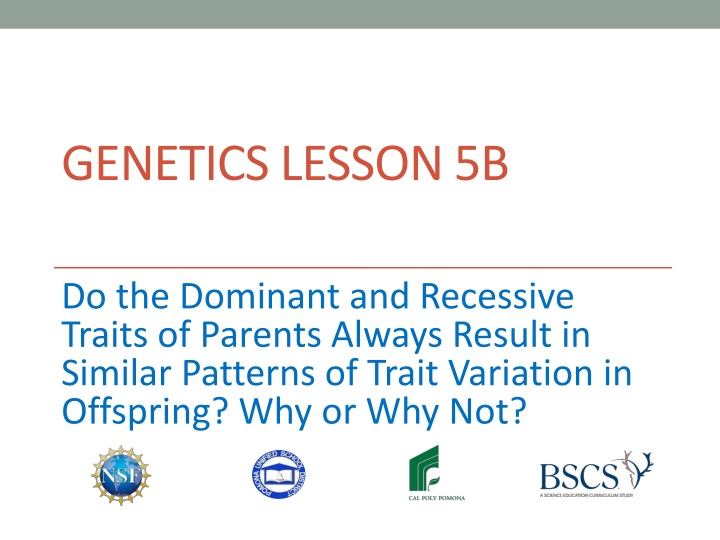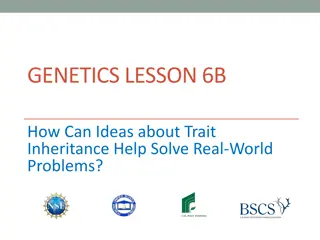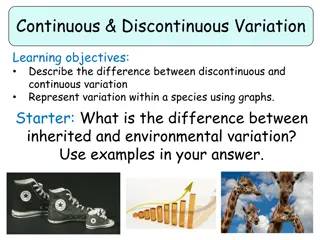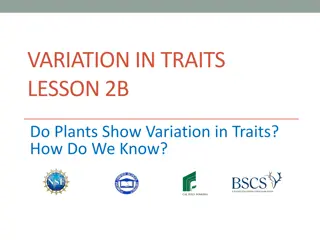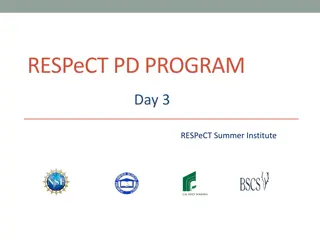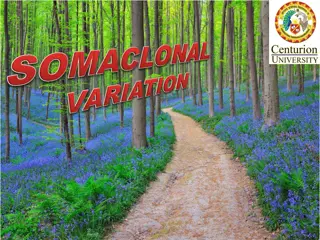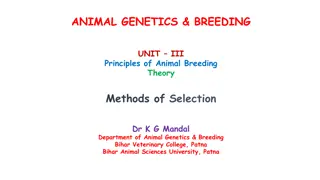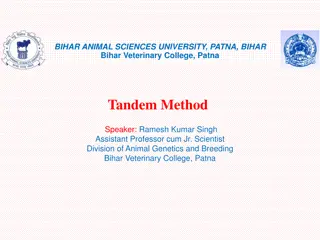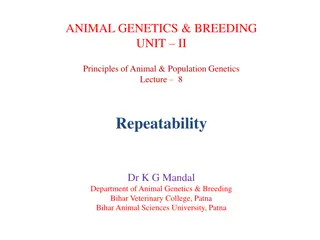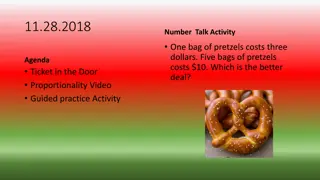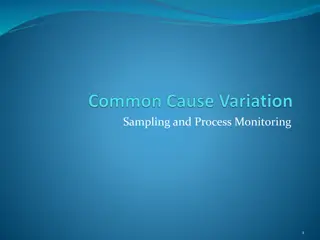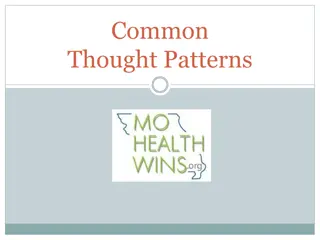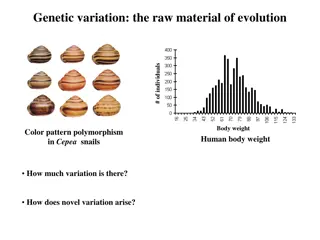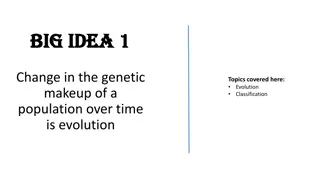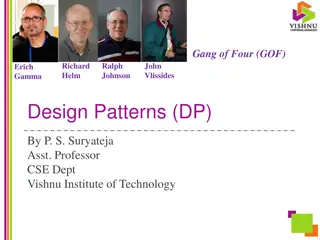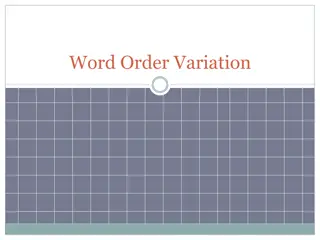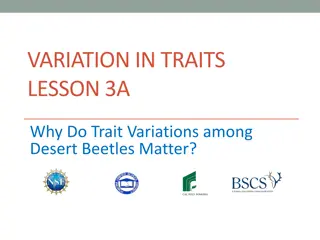Patterns of Trait Variation in Offspring
Inheritance patterns of dominant and recessive traits in offspring through Punnett squares and allele combinations of parents. Delve into why certain traits manifest and how genetic inheritance influences offspring traits.
Download Presentation

Please find below an Image/Link to download the presentation.
The content on the website is provided AS IS for your information and personal use only. It may not be sold, licensed, or shared on other websites without obtaining consent from the author.If you encounter any issues during the download, it is possible that the publisher has removed the file from their server.
You are allowed to download the files provided on this website for personal or commercial use, subject to the condition that they are used lawfully. All files are the property of their respective owners.
The content on the website is provided AS IS for your information and personal use only. It may not be sold, licensed, or shared on other websites without obtaining consent from the author.
E N D
Presentation Transcript
GENETICS LESSON 5B Do the Dominant and Recessive Traits of Parents Always Result in Similar Patterns of Trait Variation in Offspring? Why or Why Not?
Review: Patterns of Trait Variation How did you answer yesterday s focus questions: Do the dominant and recessive traits of parents always result in similar patterns of trait variation in offspring? Why or why not? What patterns did you observe in the ducko offspring that helped you answer these questions?
Lesson Focus Questions Today s focus questions should look familiar: Do the dominant and recessive traits of parents always result in similar patterns of trait variation in offspring? Why or why not? In this lesson, we ll gather more information about these science ideas and revise our answers to these questions at the end.
Create Your Own Punnett Square! Mom has a red bill. MOM s Alleles B B Dad has an orange bill. DAD s Alleles b b
Punnett-Square Results Mom has a red bill. MOM s Alleles B B Dad has an orange bill. DAD s Alleles b b B B Why weren t there any orange-billed ducko offspring in Generation 1, even though the dad had an orange bill? Bb b Bb Possible Alleles for Offspring: Bb = 4/4 Possible Traits for Offspring: Bb = Red = 4/4 b Bb Bb
Exploring Trait Patterns in Offspring 1. In your small group, set up Punnett squares for each of the three scenarios on the handout. 2. Write the mom s two alleles at the top of the square, and the dad s two alleles on the left side of the square. 3. Fill in each Punnett square showing the possible allele combinations of the parents. 4. Record the number of times each allele combination occurs, and the number of times each trait occurs in the offspring. Then calculate the ratio of dominant to recessive traits in each scenario.
Exploring Trait Patterns: The Results What combinations of alleles and traits did you come up with for each of the three scenarios on the handout? Were the results what you expected to see? Why or why not?
Discussion Questions 1. What is the pattern of trait variation in the offspring when the parents have two different traits? Will offspring of parents with two different traits always show only the dominant trait? Why or why not? 2. What is the pattern of trait variation in the offspring when the parents have the same trait? Will offspring of parents with the same trait always have that trait? Why or why not? 3. Based on the Punnett squares, can you predict the traits of individual offspring? For example, if parents have four offspring, can you predict which trait the fourth offspring will have? Can you predict the exact ratio of dominant to recessive traits that all four offspring will have? Why or why not?
Revisiting Todays Focus Questions Do the dominant and recessive traits of parents always result in similar patterns of trait variation in offspring? Why or why not? Review your earlier answers to these questions and then use the information you gathered today to revise your response or write a new one. Include in your answers how the Punnett squares in our three scenarios helped you predict trait patterns in offspring.
Next Time In the next lesson, we ll use pedigrees and Punnett squares to explore how science ideas about inheritance can help us solve real-world problems.
